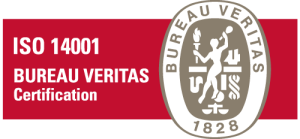Customs tariffs are key taxes in international trade that affect both importers and exporters. In this article, we will explore what tariffs are, how they are calculated through tariff codes, and the effect they can have on your business and pricing. Keep reading!
What Is a Customs Tariff?
A customs tariff is a tax or duty applied to goods exported or imported into a specific country. However, it is more common for tariffs to be charged on imports. The aim is to give a competitive advantage to products made domestically. This way, national companies can offer more affordable prices compared to foreign products. Additionally, customs tariffs are an important source of revenue for governments. Export tariffs are less common but do exist. These tariffs are applied to domestic goods sold abroad. In the European Union (EU), export tariffs are practically non-existent, and when they do apply, it is usually for economic strategic reasons.
In contrast, the EU promotes exports, encouraging this movement with tax benefits. However, navigating tariffs and ensuring compliance can be challenging without proper guidance. This is where customs brokerage plays a critical role, helping businesses manage tariffs, paperwork, and regulations efficiently. But how can you determine the amount of a customs tariff linked to a specific product? When trading within the EU, the answer is simple: the tariff code provides the information needed to pay the corresponding amount. We delve into this concept in the next section.
What Is a Custom Tariff Code?
All products traded in certain countries, whether imported or exported, are classified using what is known as a “tariff code”. This numbering system helps to understand the conditions and tariffs applied to a specific commodity. The tariff code provides key information on the following points: Types of duty and other applicable taxes on the product. Any protective measures, such as anti-dumping. Import and export formalities. Other non-tariff requirements like health certificates or quality controls.
The global classification system that establishes the rules surrounding tariff codes is called the Harmonized System (HS). It is an agreement developed by the World Customs Organization (WCO), covering around 5,000 groups of basic products. According to the HS, custom tariff codes are organized using the following hierarchical structure:
- Section
- Chapter (2 digits)
- Headings (4 digits)
- Subheadings (6 digits)
- To find out which countries use the HS, you can consult the list provided by the WCO.
The Tariff Code in the European Union
In the case of the EU, the Combined Nomenclature is used, which is the EU’s eight-digit code system. It includes the HS codes with additional subdivisions and legal notes specifically created to meet the needs of the EU. Additionally, EU countries use the TARIC code (TARif Intégré Communautaire or Integrated Tariff of the European Communities), a numbering system that shows the various rules applied to specific products when they are imported into the EU. This includes provisions from the Harmonized System and the Combined Nomenclature, but also additional provisions specified in EU legislation, such as tariff suspensions, tariff quotas, and tariff preferences. When trading with third countries, the 10-digit TARIC code must be used in customs declarations.
The Impact of Customs Tariffs on International Trade
When a country imposes tariffs on imported goods, the price of those goods increases, which can affect consumers’ ability to purchase them. This can limit business opportunities for companies exporting those goods and reduce the volume of international trade. If you plan to export your goods to another country, you should consider customs tariffs when setting prices. This might lead you to develop different business strategies. Here are a few examples: It might be beneficial to reduce the profit margin on each product to offer more competitive prices, aligning them with the cost of products made and sold in the destination country. You could offer competitive prices by offsetting the customs tariff with cost reductions in production or transportation.
Special Case: Customs Tariffs in the United Kingdom (UK)
Since the United Kingdom (UK) left the EU on January 31, 2020, and began an 11-month transition period until December 31, 2020, it was treated as an EU member. However, starting January 1, 2021, international trade conditions changed between the UK and the EU. From that point on, the UK government began applying tariffs on products from countries with which the UK had no trade agreements. As expected, a trade agreement was reached, and today the UK has its own customized tariff for goods from the EU, establishing a “zero tariff” for most European-origin goods. Under the post-Brexit agreement, tariffs were eliminated for most goods that meet certain origin requirements. For example, a significant part of the product’s value must be generated in the exporting country or the country with which there is a trade agreement. The situation of tariffs between the UK and the EU post-Brexit presents a mix of opportunities and challenges for businesses. The removal of tariffs for most goods opens the door to smoother trade, but companies must be prepared to meet specific requirements and stay informed of any regulatory changes. Adaptability and a clear understanding of the trade agreement details are key to making the most of new opportunities in this evolving business environment. Do you have questions about the customs tariffs associated with your goods? Are you unsure of the tax burden you will incur when exporting your products? At Partida Logistics, our team of international logistics experts can help you clarify the situation so you can develop a pricing strategy focused on optimizing profits.




